|
Aug 30, 1876
|
Born in Taunton, England to
James and Jane (nee Burrows) Tarrington
|
|
Aug 6, 1900
|
Married to Lily Lizzette Lake
in the St. Mary Church, Somerset, England
|
|
Nov 29, 1907
|
Embarked the SS Empress of
Britain in Liverpool with his wife and 3 children, Lydia, James and William
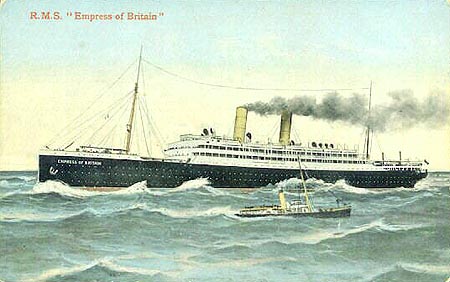
|
|
Dec 8, 1907
|
Disembarked in Saint John, New
Brunswick and proceeded to Napanee, Ontario
|
|
Nov 9, 1914
|
Attested into the 21st
Battalion CEF in Kingston, Ontario
Ø Number 59951
(temporary number 808)
Ø Next of kin given
as Mrs. Tarrington, wife, Alexander St., Port Hope, Ontario
Ø Previous occupation
given as Bricklayer
Ø No previous
military experience given
Ø Religion given as
Church of England
Ø Assigned to “G”
Company
o This was later
reorganized into “D” Company
The battalion trained in the
Kingston area through the winter with headquarters in the Kingston Armouries
The ship’s manifest for his
immigration to Canada indicated his age as “33 years”. On attesting he stated he was born August
30, 1881, not his actual birth year of 1876.
|
|
May 6, 1915
|
Embarked the RMS Metagama in
Montreal, Quebec

|
|
May 15, 1915
|
Disembarked in Devonport,
England and the battalion proceeded to the West Sandling Camp, near Hythe,
Kent to continue training
|
|
Sep 14, 1915
|
Embarked the St. Seiriol in
Folkestone
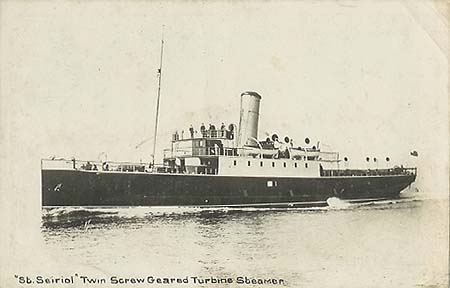
|
|
Sep 15, 1915
|
Disembarked in Boulogne,
France and the battalion proceeded to St. Omer
|
|
Dec 4, 1915
|
Admitted to the No. 5 CFA
(Canadian Field Ambulance) with a diagnosis that reads Sciatica. He was transferred the same day to the No.
6 CFA Divisional Rest Station in Locre, Belgium
|
|
Dec 8, 1915
|
Transferred to the North
Midlands Division Rest Station in Mont des Cats, France
|
|
Dec 15, 1915
|
Discharged to duty with the 21st
Battalion
|
|
Jan 2, 1916
|
Admitted to the No. 5 Canadian
Field Ambulance with a diagnosis that reads Bronchitis. He was transferred the same day to the
Divisional Rest Station at Mont Des Cats and Lumbago and Myalgia are added to
the diagnosis
|
|
Jan 20, 1916
|
Transferred via the No. 24 AT
(Ambulance Train) and admitted to the No. 2 Canadian Stationary Hospital in
Boulogne, France
|
|
Feb 22, 1916
|
Invalided to England aboard
the Hospital Ship St. Patrick
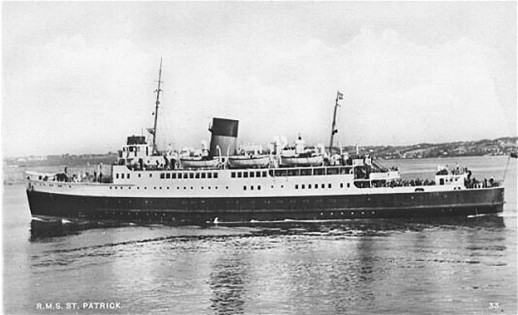
On arrival in England he was
admitted to the Duchess of Connaught Canadian Red Cross Hospital in Taplow
and Rheumatism is added to the diagnosis
Posted to the CCAC (Canadian
Casualty Assembly Centre) for pay purposes while in hospital
Red Cross hospital record
shows moderate tobacco use and “good deal alcohol use”. The record also indicates that the present
illness was caused by exposure to the wet and cold of the trenches.
|
|
Mar 20, 1916
|
Transferred to the Granville
Canadian Special Hospital in Ramsgate
|
|
Apr 24, 1916
|
Discharged to duty from
hospital
|
|
Apr 30, 1916
|
Attached to the discharge
depot in Folkestone pending return to Canada
|
|
May 12, 1916
|
Embarked the RMS Metagama in
Liverpool

|
|
May 20, 1916
|
Disembarked in Montreal,
Quebec and proceeded to Kingston, Ontario
|
|
May 26, 1916
|
Admitted to the Elmhurst
Military Hospital in Kingston with a diagnosis that reads Myalgia
|
|
Jul 29, 1916
|
Transferred to the Richardson
Convalescent Hospital in Kingston
|
|
Oct 20, 1916
|
Discharged from the CEF in
Kingston, Ontario
Ø Rank on discharge
Private
Ø Discharged as
Medically Unfit
Ø War Service Badge
Class “A” issued
|
|
Apr 20, 1918
|
James Tarrington died of
Pneumonia while a patient in the Grace Hospital, Toronto, Ontario and was
buried in the Prospect Cemetery there
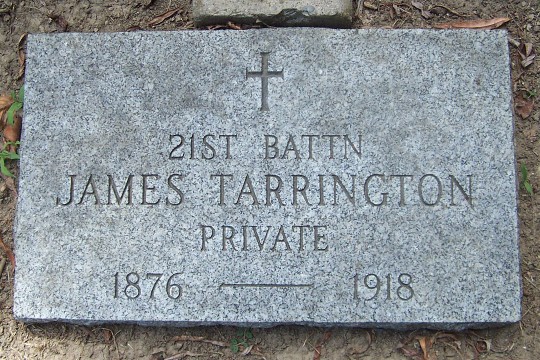
Following the war, the 1914-15
Star, British War Medal and Victory Medals were sent to Alexander St., Port
Hope, Ontario. There is no indication
in the file who they were sent to, as both James and Lily Tarrington were
deceased at the time. Neither is there
any indication that the medals were ever returned
|
|
Sep 4, 1919
|
Lily Tarrington died while a
patient in the Toronto General Hospital of a Pulmonary Embolism, and was
buried in the Prospect Cemetery, near her husband, James
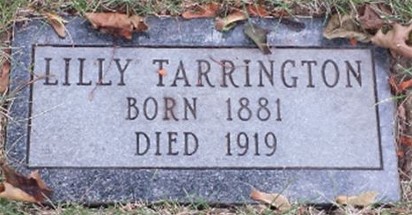
The Tarrington children were
separated and raised by various family members and friends
|
|
Toronto
Telegram, July 29, 1918
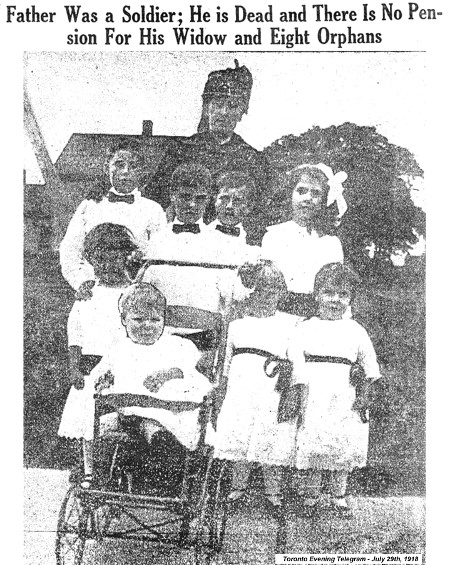
Toronto
Star, August 1, 1918

Despite repeated claims that he had been gassed at the front
there was no evidence found at the time that this was true. Upon
reviewing his file, and the battalion's war diary, I could find no
indication that he ever suffered from the effects of a gas attack. His
medical records indicate that the health problems were a result of exposure
to the wet and cold of the trenches. It was for this reason that no
pension was ever granted, either to him or his surviving family.
James
Tarrington is honoured on the Port Hope, Ontario War Memorial
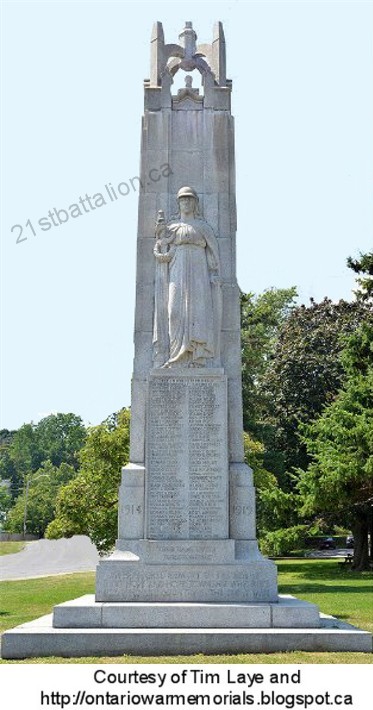

|
|